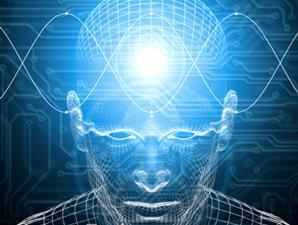skip to main |
skip to sidebar
IBM produced the first chip that is claimed to have capabilities that are designed so that most closely the ability of the human brain. Microprocessor system that can do a "rewiring" the connection when it finds new information, just like the work of synapses in the human nervous system.
Scientists believe, by replicating the human nervous system, the technology can continue to learn. Cognitive computing is developed in this chip will probably be used to understand human behavior and are used for environmental monitoring.
Dhamendra Modha, the IBM project leader explained that currently IBM is trying to get back to those aspects that exist in humans, such as emotion, perception, cognition, and sensation by a process called "reverse engineering the brain".
Synapses system, thus the name of the system developed by IBM, has two prototype chips neurosinapsis computing. Both have 256 computational cores which, according to scientists in the electronic equivalent of neurons. One chip has 262 144 synapses programmed, while others have synapses 65,536 learners.
In animals and humans, the synapses connecting the cells of the brain and other nerve section on the basis of new experience in both the creature's life. The learning process is essentially the creation and strengthening of synapses that. A machine, of course not be soldered onto and detached by itself. However, this can be simulated by increasing the volume of the input signal and put less attention on the other.
So far, IBM has not shown in detail how the system works synapses. However, Dr. Richard Cooper, cognitive scientist at Birbeck University of London said, it is possible to replicate the physical connection to the virtual machine. In addition to strengthen and weaken the network, systems such as those developed by IBM to easily remember how much "attention" given to each signal and change the dependence on new experiences.
"Part of the trick is learning algorithms, How do you should turn the volume up and down," says Dr. Cooper. "There is much work to be done with relatively simple systems such as associate memory. When we see a cat, we may see a little mouse," continued Cooper.
Some people consider that this technology will reach its peak when the machine consciousness materialized. However, Mark Bishop, warns professor of cognitive computing, "I understand cognition as something more and beyond the simulation process with the execution of the only computing, such claims are on the verge of a miracle."
Until now, IBM continues to work on projects together Synapses its academic partner, and had just given a 21 million U.S. dollars by the U.S. Defense Advanced Research Projects Agency (DARPA).
Friday, October 28, 2011
Home
![]() IBM's chip production that mimics the human brain
IBM's chip production that mimics the human brain
![]() IBM's chip production that mimics the human brain
IBM's chip production that mimics the human brain
IBM's chip production that mimics the human brain
IBM produced the first chip that is claimed to have capabilities that are designed so that most closely the ability of the human brain. Microprocessor system that can do a "rewiring" the connection when it finds new information, just like the work of synapses in the human nervous system.
Scientists believe, by replicating the human nervous system, the technology can continue to learn. Cognitive computing is developed in this chip will probably be used to understand human behavior and are used for environmental monitoring.
Dhamendra Modha, the IBM project leader explained that currently IBM is trying to get back to those aspects that exist in humans, such as emotion, perception, cognition, and sensation by a process called "reverse engineering the brain".
Synapses system, thus the name of the system developed by IBM, has two prototype chips neurosinapsis computing. Both have 256 computational cores which, according to scientists in the electronic equivalent of neurons. One chip has 262 144 synapses programmed, while others have synapses 65,536 learners.
In animals and humans, the synapses connecting the cells of the brain and other nerve section on the basis of new experience in both the creature's life. The learning process is essentially the creation and strengthening of synapses that. A machine, of course not be soldered onto and detached by itself. However, this can be simulated by increasing the volume of the input signal and put less attention on the other.
So far, IBM has not shown in detail how the system works synapses. However, Dr. Richard Cooper, cognitive scientist at Birbeck University of London said, it is possible to replicate the physical connection to the virtual machine. In addition to strengthen and weaken the network, systems such as those developed by IBM to easily remember how much "attention" given to each signal and change the dependence on new experiences.
"Part of the trick is learning algorithms, How do you should turn the volume up and down," says Dr. Cooper. "There is much work to be done with relatively simple systems such as associate memory. When we see a cat, we may see a little mouse," continued Cooper.
Some people consider that this technology will reach its peak when the machine consciousness materialized. However, Mark Bishop, warns professor of cognitive computing, "I understand cognition as something more and beyond the simulation process with the execution of the only computing, such claims are on the verge of a miracle."
Until now, IBM continues to work on projects together Synapses its academic partner, and had just given a 21 million U.S. dollars by the U.S. Defense Advanced Research Projects Agency (DARPA).
Subscribe to:
Post Comments (Atom)
Search This Blog
Welcome to My Blog
Total Pageviews
Followers
Copyright 2009. News Today Kingdom - WPBoxedTech Theme Design by Technology Tricks for Health Coupons.
Bloggerized by Free Blogger Template - Sponsored by Graphic ZONe and Technology Info
Bloggerized by Free Blogger Template - Sponsored by Graphic ZONe and Technology Info




0 comments: on "IBM's chip production that mimics the human brain"
Post a Comment